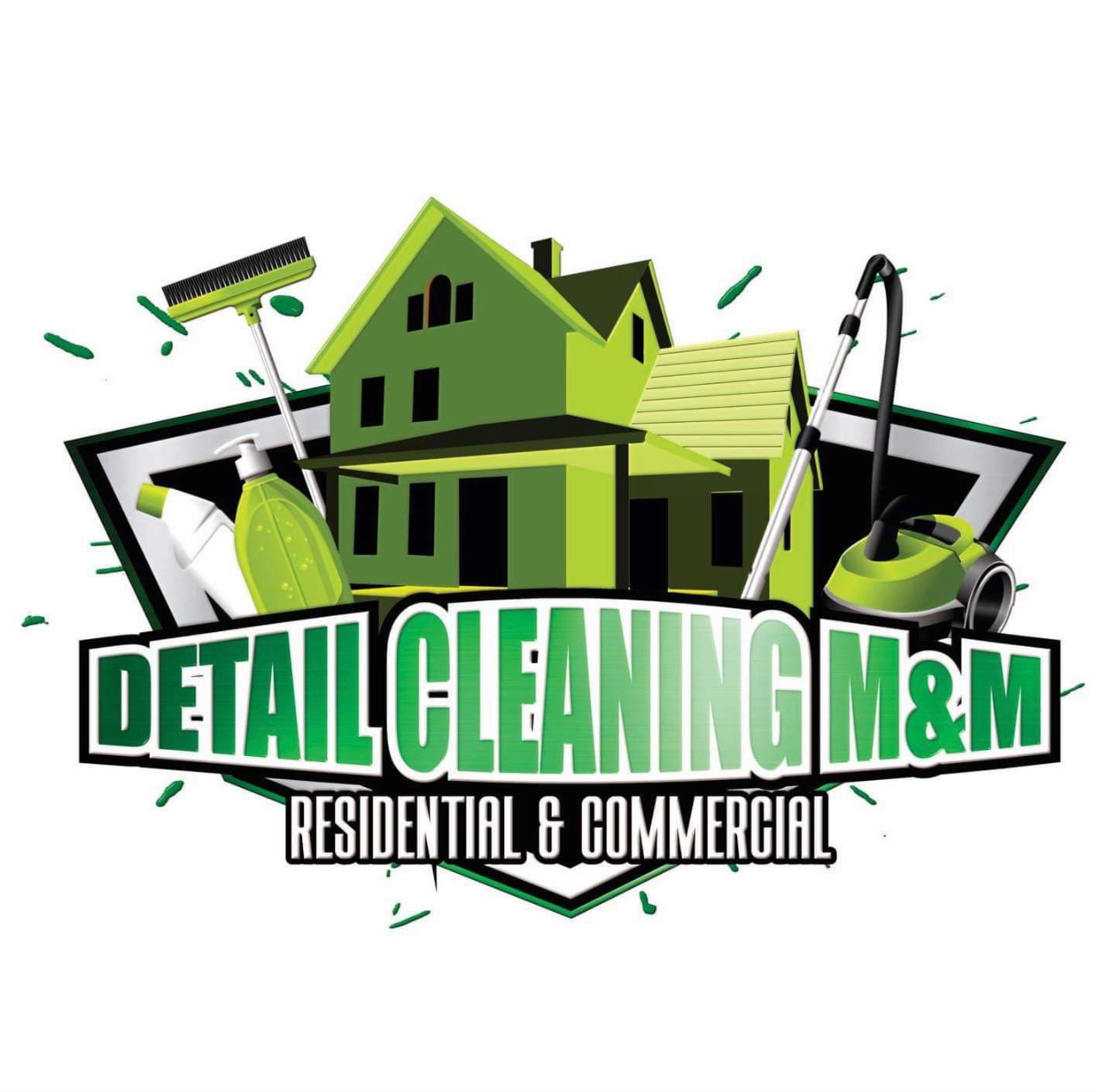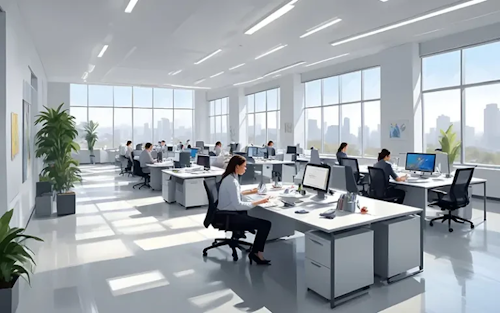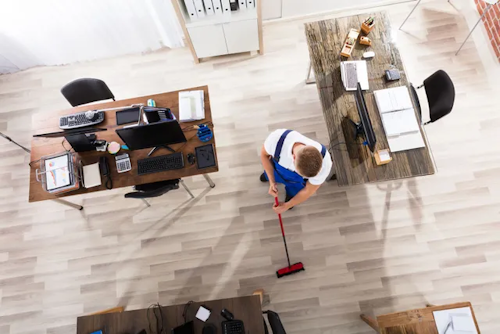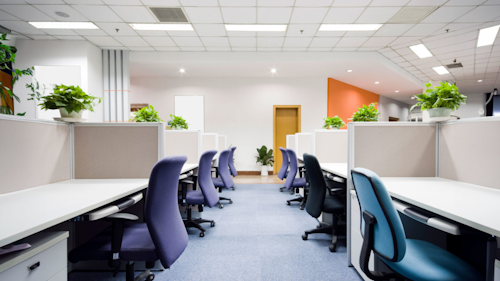Ensuring a secure and healthy workspace holds paramount importance, particularly concerning office cleaning. In this blog post, we will delve into crucial office cleaning safety protocols that must be instituted to safeguard the well-being of employees and maintain a pristine environment. By adhering to these detailed protocols, you can cultivate a safe and healthy workplace for everyone involved. The protocols encompass everything from using appropriate cleaning agents and ensuring proper ventilation, to employing the correct equipment and protective gear. Each step is designed meticulously to prevent accidents and promote a culture of cleanliness and health.
Importance of Office Cleaning Safety Protocols
Office cleaning encompasses a range of tasks that can present potential hazards if appropriate safety precautions are not strictly adhered to. Whether it’s the careful handling of potent cleaning chemicals or the operation of cumbersome equipment, the importance of having well-defined safety protocols cannot be overstated. These protocols are essential to avert accidents, prevent injuries, and minimize exposure to dangerous substances. The implementation of comprehensive office cleaning safety measures not only safeguards employees but also fosters a positive and secure work environment.
Essential Office Cleaning Safety Protocols
Personal Protective Equipment (PPE): Ensure that all cleaning staff are outfitted with the appropriate PPE, including sturdy gloves, snug safety goggles, fitted masks, and durable protective clothing. This essential gear acts as a barrier, minimizing exposure to hazardous chemicals, airborne allergens, and other potentially harmful substances that could pose health risks during cleaning tasks.
Chemical Safety: Train cleaning staff thoroughly on the intricacies of handling, storing, and using cleaning chemicals. Provide clear, detailed instructions for dilution ratios to ensure safe and effective cleaning. Emphasize the importance of working in well-ventilated areas and strictly adhering to the manufacturer’s guidelines. Proper labeling and secure storage of chemicals are critical to prevent accidental misuse and dangerous chemical reactions.
Equipment Safety: Conduct regular, meticulous inspections and maintenance of cleaning equipment to guarantee their safe and efficient operation. Train employees with comprehensive guidance on equipment use, including demonstrating proper lifting techniques for heavy items, skillfully maneuvering around cords and cables, and exercising caution on wet surfaces to mitigate the risk of slips and falls.
Slip and Fall Prevention: Implement proactive measures to avert slip and fall incidents, such as swiftly cleaning up any spills, prominently displaying caution signs, and ensuring thorough drying of wet surfaces. Conduct regular inspections of floor surfaces to spot any potential hazards, addressing them promptly to maintain a safe environment.
Training and Communication: Provide extensive training to cleaning staff on safety protocols, covering the correct use of equipment, safe handling of chemicals, and emergency procedures. Cultivate a culture that prioritizes open communication, encouraging employees to voice any safety concerns or report incidents, thus fostering a collaborative effort towards a safer workplace.
Office Cleaning Safety Protocols
By prioritizing comprehensive office cleaning safety protocols, you cultivate a work environment that is not only safer but also healthier and more pleasant for everyone. This approach significantly reduces the risk of accidents, such as slips and falls, and actively promotes the well-being of employees by ensuring that the workspace is clean and hygienic. It is essential to regularly review and update these safety protocols to effectively address any emerging risks or changes in cleaning practices, such as the introduction of new cleaning agents or equipment. Together, let’s commit to maintaining a safe and healthy workplace by adhering to and enhancing proper office cleaning safety protocols, ensuring everyone can thrive in a secure and supportive setting.
FAQ
Q: What are the key elements of workplace safety?
A: Workplace safety involves creating a safe and healthy environment for employees, and it includes measures to prevent hazards, promote cleanliness, and ensure proper ventilation.
Q: Why is commercial cleaning important for workplace safety?
A: Commercial cleaning plays a crucial role in maintaining a safe and healthy workplace by preventing the spread of germs, viruses, and bacteria, thus reducing safety risks and hazards.
Q: What are some safety precautions to consider when using cleaning products in the workplace?
A: When using cleaning products, it’s important to follow safety precautions such as wearing protective gear, ensuring proper ventilation, and using high-quality cleaning solutions to minimize health and safety risks.
Q: How does OSHA (Occupational Safety and Health Administration) contribute to workplace safety?
A: OSHA sets and enforces safety standards to ensure safe working environments, provides guidelines for cleaning and disinfecting procedures, and conducts inspections to help prevent safety risks in the workplace.
Q: What cleaning practices should be followed to maintain a safe and healthy workplace?
A: Employers and employees must follow cleaning and disinfecting schedules, use appropriate cleaning agents, follow OSHA guidelines, and put in place sanitation measures to maintain a safe and healthy workplace.
Q: Why is it important to have a cleaning schedule in the workplace?
A: A cleaning schedule ensures that cleaning and disinfecting activities are performed regularly to prevent the spread of germs, bacteria, and viruses, thus maintaining a safe and healthy environment for everyone.
Q: What role does a cleaner play in maintaining workplace safety and cleanliness?
A: Cleaners are responsible for using proper cleaning procedures, following safety tips, and using disinfectants to maintain cleanliness, thus helping to prevent safety risks and promote a healthy workspace.
Q: What are some safety measures to prevent the spread of germs and viruses in the workplace?
A: To prevent the spread of germs and viruses, it’s important to ensure that all containers of cleaning products are appropriately labeled, always follow safety precautions, and maintain good hygiene practices.
Q: How can employers ensure a safe and healthy workplace for their employees?
A: Employers must provide a safe working environment by implementing safety standards, conducting regular inspections, and taking responsibility to ensure that all cleaning procedures and precautions are being followed.
Q: Why is it important for employees to be aware of safety risks and hazards in the workplace?
A: By being aware of safety risks and hazards, employees can take necessary precautions, such as proper disposal of spillage, using cleaning solutions safely, and maintaining cleanliness, to mitigate potential risks and promote a safe working environment.




